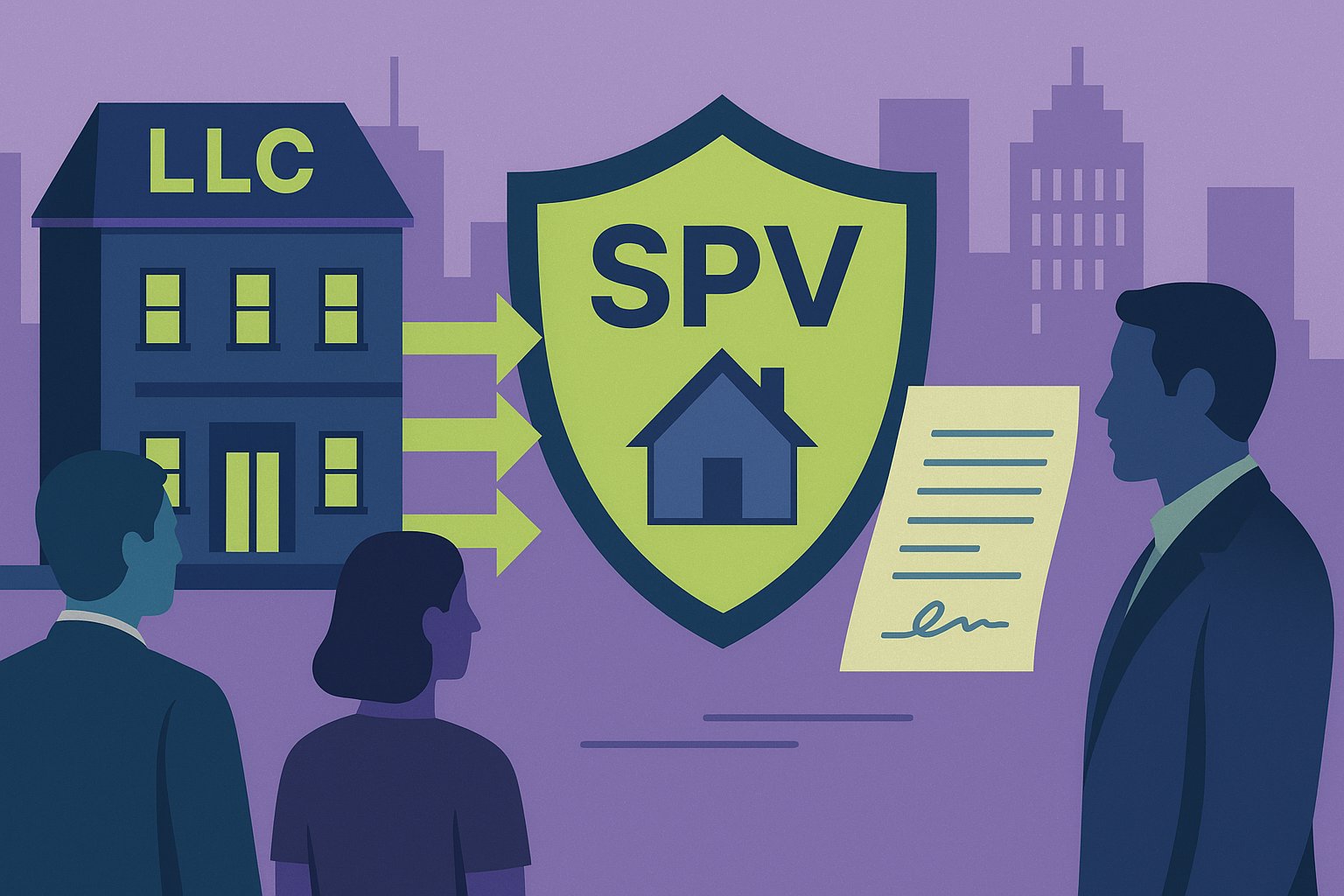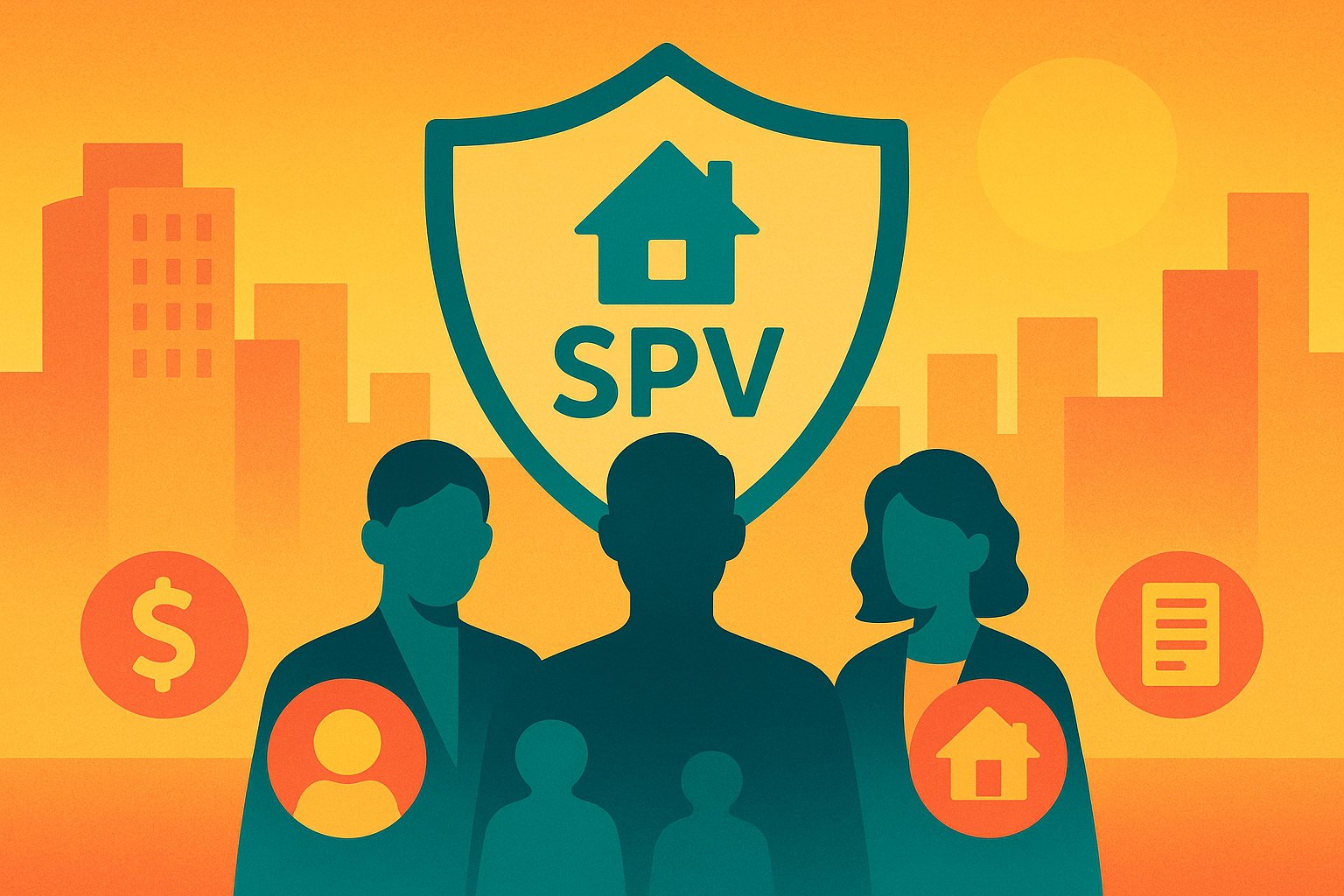Peeling Back the Layers of Crowdfunding Innovation
In recent years, real estate crowdfunding has captured the imagination of both novice and seasoned investors, opening doors to property ownership that once required hefty capital and insider connections. At the heart of many crowdfunding offerings lies a legal and financial structure known as the Special Purpose Vehicle (SPV). While the term may sound arcane or intimidating, SPVs play a crucial role in bringing large-scale real estate projects within reach of everyday investors. This guide demystifies SPVs, transforming what might seem like legal jargon into actionable insights for those eager to dip their toes into crowdfunded property investments. By the end of this journey, you will understand not only what an SPV is, but how it operates, why it matters, and how you can confidently participate in SPV-backed real estate deals.
Defining the Special Purpose Vehicle: A Simple Blueprint
Imagine a container carefully crafted to hold just one specific asset or project, isolating its risks and rewards from other ventures. That’s essentially the purpose of an SPV in real estate crowdfunding. Legally, an SPV is a standalone corporate entity—often structured as an LLC or limited partnership—created exclusively to acquire, own, and manage a single property or portfolio of properties. By design, the SPV’s activities are ring-fenced; it holds no assets or liabilities outside the scope of the covered real estate project. For investors, this structure provides clarity around ownership interests and a direct line to the performance of a particular property without the noise of unrelated business risks.
The Inner Workings: Anatomy of a Real Estate SPV
Every SPV follows a set of standard steps from inception to wind-down. First, the sponsoring company—often a real estate developer or crowdfunding platform—creates the SPV, typically registering it in a business-friendly jurisdiction. Next, the SPV issues membership interests (in an LLC) or partnership units to raise capital from investors. Those funds are then used to close the property purchase, cover renovations, or finance development. Throughout the holding period, the SPV collects rental income, manages expenses, and distributes cash flow back to investors in proportion to their ownership stakes. At the end of the investment horizon, the SPV executes an exit strategy—selling the property, refinancing it, or converting it into a long-term hold—before distributing the final proceeds and formally dissolving.
SPVs as the Powerhouse of Crowdfunding Platforms
Crowdfunding platforms leverage SPVs to streamline the investment process and offer investors fractional ownership in high-value real estate deals. Rather than each investor becoming a direct co-owner in a property—a logistical and legal nightmare—investors channel their funds into the SPV. This pooled capital approach simplifies everything: one set of closing documents, one property deed in the SPV’s name, and one tax reporting structure. Investors benefit from professional asset management by the sponsor, centralized fee collection, and transparent performance tracking through platform dashboards. Meanwhile, sponsors enjoy the ability to mobilize capital from hundreds or thousands of investors with minimal administrative overhead.
Unlocking Investor Advantages: Why SPVs Matter
For investors, SPVs deliver several compelling advantages. They offer a clear ownership vehicle, with precise documentation of rights, responsibilities, and distributions. The legal isolation of the SPV means that any liabilities tied to the property—such as environmental liabilities or construction claims—remain contained, protecting investors’ other assets. Additionally, SPVs often come with standardized agreements and reporting, making it easier to compare deals and track performance across multiple investments. Tax efficiency is another significant benefit: SPVs structured as pass-through entities allow income and deductions to flow directly to investors’ personal tax returns, often avoiding the double taxation that arises with corporate structures.
A Candid Look at Risks: What Every Beginner Should Know
No investment is without risk, and SPVs are no exception. The legal insulation provided by an SPV does not guarantee positive returns; property values can decline due to market shifts, local economic downturns, or unforeseen disasters. Illiquidity is a common concern: many SPV-backed crowdfunding deals have multi-year holding periods, limiting an investor’s ability to exit early. Operational risks—such as cost overruns on renovations or management missteps—can erode projected returns. Finally, while SPVs simplify legal matters, the agreements themselves can contain complex terms around waterfalls, promote structures, and fee arrangements. A less experienced investor might overlook provisions that favor the sponsor or limit downside protection.
Understanding the Regulatory Framework: Compliance Essentials
Real estate SPVs operate within a web of securities regulations designed to protect investors and ensure market integrity. Depending on the offering’s size and structure, a crowdfunding SPV might rely on Regulation D (commonly Rule 506(b) or 506(c)), Regulation A+, or Regulation CF exemptions. Under Rule 506 offerings, sponsors can raise unlimited funds from accredited investors, with certain marketing restrictions. Regulation A+ allows advertising to the public but caps raises at $75 million annually and imposes ongoing reporting obligations. Smaller offerings under Regulation CF permit investments from the general public up to $5 million per year but require disclosures through the SEC’s crowdfunding portal. Investors should review the SPV’s offering memorandum carefully to understand eligibility requirements, disclosure obligations, and ongoing reporting schedules mandated by the SEC.
Step-by-Step: How to Invest in an SPV on a Crowdfunding Platform
Embarking on your first SPV-based investment begins with choosing a reputable crowdfunding platform. After registering and completing any investor qualifications—such as accredited investor verification—you can browse available SPV offerings. Each deal page typically features an offering memorandum, financial projections, sponsor background, and legal documents. When you commit capital, you sign subscription documents that establish your membership interest in the SPV. The platform collects funds and, upon reaching the minimum raise, closes the SPV to new investors. Throughout the holding period, you receive quarterly or monthly performance updates, distribution statements, and annual tax documents. At exit, your cash and any profits flow directly back to your designated account.
Charting the SPV Lifecycle: From Launch to Exit
The lifespan of a typical SPV in real estate crowdfunding spans three to seven years, though this can vary based on strategy and market conditions. The launch phase culminates in capital raise and property acquisition. During the stabilization phase, the sponsor focuses on leasing, renovations, and operational optimization to enhance cash flow. In the growth phase, the SPV may refinance to return initial capital to investors while retaining upside potential. Finally, the exit phase sees the sale of the property at a target valuation or through a strategic recapitalization. Upon liquidation, the SPV distributes remaining proceeds, files dissolution paperwork, and investors receive final tax K-1 forms. Understanding each phase helps investors anticipate cash flow patterns and align personal financial goals with project timelines.
The Future of SPVs: Innovations on the Horizon
As technology and regulatory landscapes evolve, SPVs in real estate crowdfunding continue to adapt. Blockchain and tokenization hold promise for creating digital shares of SPVs, enabling secondary trading and enhanced liquidity. Advances in data analytics may drive more accurate underwriting, reducing due diligence time and increasing deal flow. Meanwhile, the push for sustainability and ESG (Environmental, Social, and Governance) integration could see SPVs exclusively targeting green building projects or community-focused developments. Regulatory bodies are also exploring harmonization of crowdfunding rules, which could lower barriers for smaller investors while bolstering transparency. For beginners entering the market, staying informed about these trends can unlock new opportunities and mitigate emerging risks.
Empowered Investing Through SPV Mastery
Special Purpose Vehicles have revolutionized real estate investing by lowering entry barriers, centralizing asset management, and delineating clear investment structures for crowdfunding participants. While the mechanics may appear complex at first glance, a step-by-step exploration reveals an accessible framework for gaining property exposure without the hassles of direct ownership. By grasping SPV anatomy, regulatory considerations, lifecycle phases, and risk-reward dynamics, beginner investors can make informed decisions that align with their financial goals and risk appetite. As the real estate crowdfunding space matures, SPVs will remain pivotal in bridging capital markets and tangible assets—empowering individuals to build diversified, professionally managed property portfolios one SPV at a time.




